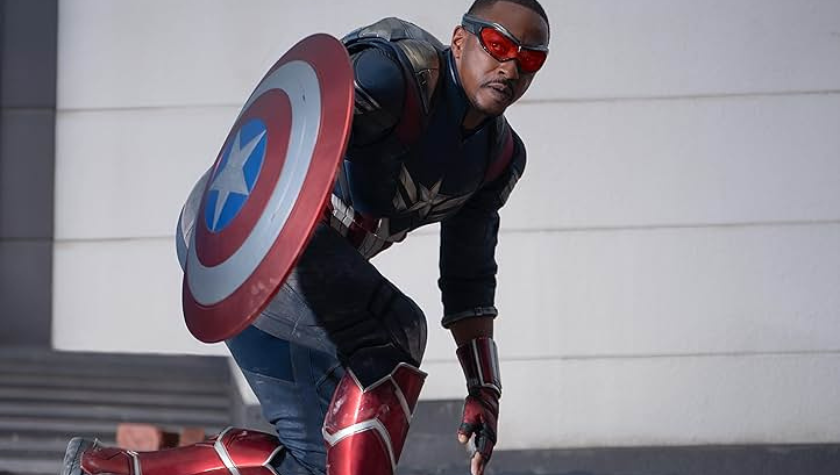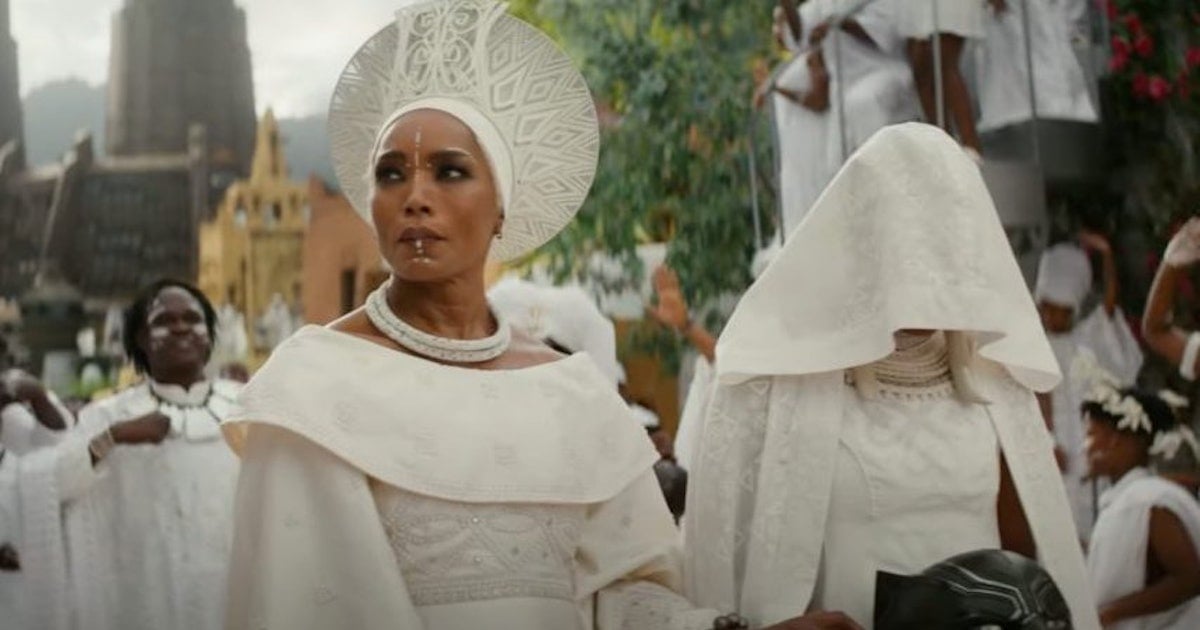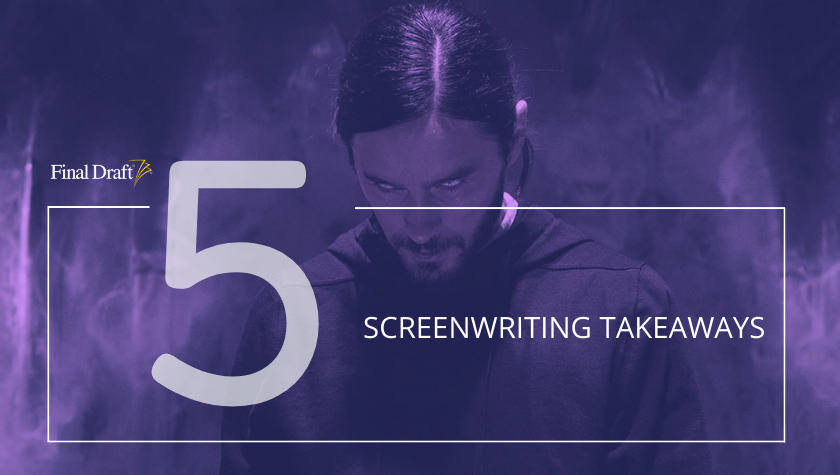5 Screenwriting Takeaways: ‘Doctor Strange in the Multiverse of Madness’
May 27, 2022
Photo courtesy of Marvel Studios
Unlike any other movie in the Marvel Cinematic Universe, Doctor Strange in the Multiverse of Madness has mind-bending, reality-testing plots and twists, but it also takes on a different, more horror-like style. That’s due to director Sam Raimi, who returns to the superhero genre fifteen years after the release of Spider-Man 3. For Sam Raimi fans, his signature is all over this film, including excessive wind, in-your-face horror elements and even nefarious books that seem like their only point is to cause trouble.
Doctor Strange in the Multiverse of Madness, written by Michael Waldron (Loki TV series), stars Benedict Cumberbatch, Elizabeth Olsen, Rachel McAdams, Benedict Wong, Chiwetel Ejiofor, and Xochitl Gomez. The film follows Dr. Strange after he saves America, a young woman, running for her life from the Scarlett Witch who will stop at nothing to steal her powers and travel through the multiverse.
Here are five screenwriting takeaways from Doctor Strange in the Multiverse of Madness.
1. Crafting a successful standalone
In the Marvel Cinematic Universe, the thought of a single movie standing alone and not being part of a bigger picture is unheard of. Every film since Iron Man added a piece to an overall storyline. While that still is the case with this movie to an extent, the filmmakers had to create a movie that could stand on its own.
Doctor Strange in the Multiverse of Madness is both a piece in the big Marvel puzzle and a sequel. It not only brings together elements of previous films but a TV series as well.
However, you could be brand new to Marvel films and get the idea of what is going on in this film. That is due to the first few scenes that set up who the characters are, the stakes they face, and the expectations of their world.
The first few scenes will educate new audiences on Dr. Strange's (Cumberbatch):
- Ability to use his hands to create magic
- His easy candor with Wong (Benedict Wong) when he shows up (indicating their history)
- Magic Cape and how it assists him and helps him fly
Screenwriters can observe everything from how the characters interact with others and the events in the scene to see how subtly the filmmakers introduce them to a potentially new audience.
2. The dance of exposition
What’s the multiverse? What does the Illuminati want? What is this place at the top of the mountain?
There are a lot of questions in Doctor Strange, which means someone must explain what it all means. This is where exposition comes in. When there aren’t clear answers to the meaning of locations, people, pasts, and more, someone has to enlighten those asking.
Exposition is a necessary evil. In a visual medium, exposition becomes the talking heads that aren’t always visually enticing. So, how can you, as a writer explain what’s going on without boring the audience?
Action! Use exposition during action sequences. During one sequence, Doctor Strange chats with one of the leaders of the Illuminati while the Scarlet Witch (Olsen) wreaks havoc nearby. Several other superheroes are trying to stop her from reaching America (Gomez) who holds the powers of the multiverse. It’s a constant back-and-forth between action driving the plot and some quiet exposition between two characters.
There are several examples writers can learn from in the film, but for the sake of spoilers, we'll stick to one!
3. What is motivating your antagonist?
Gone are the days when villains were evil just because they want to be. Today’s villain must have a purpose, generally, one that moviegoers can empathize with. Sometimes they want recognition, other times they want love and/or power.
Wanda/Scarlet Witch wants to be with her kids. Wanda has dreams about taking care of her two boys and enjoying a peaceful suburban life. Dreams, as we learn from the story, are really our ability to see other universes in which alternate versions of ourselves live. She knows that this life exists somewhere, and she will stop at nothing to get there.
You can see how the movie builds a complex villain and shows why the enemy of the hero is making the choices they are. She could want access to the multiverse for its power or some sinister plot, but at the heart of it, she’s a mom who wants to be with her children.
4. Knock your hero down
Doctor Strange doesn’t start the movie off in a great position. He wakes up from a nightmare, goes to the wedding of his ex-girlfriend (who he still loves), and seems to drink some regrets away. Then he gets to play hero as he saves a young girl from a giant octopus. This sets the adventure up and leads to Doctor Strange making bad decisions.
Whether it’s getting poisoned by tea or making the wrong decision that puts himself and others in even more peril, Doctor Strange is constantly getting knocked down. You can see how the hero constantly rises to meet the challenge only to be knocked down again. Ultimately though, your hero must succeed and, almost more importantly, he can’t do it alone. Writing in characters who support your hero makes for a more believable story.
5. No plans of writing for Marvel?
From the multiple universes to ongoing superhero sagas to its horror elements, Doctor Strange in the Multiverse of Madness was made for fans of the Marvel Cinematic Universe. But if the multiverse thing isn’t for you and you’re not the biggest comic book fan, then there doesn’t seem to be a reason to see the movie.
But consider this: when you write something specific, it can often be appealing to a wider audience. The movie is an adventure and, while it is made for the Marvel fan, writers can see how the movie was constructed and how they can write one with similar heroic wins and losses.
Doctor Strange in the Multiverse of Madness is currently playing in theaters.
Written by: Steven Hartman
Steven Hartman is an award-winning, optioned screenwriter. He was a Top 5 Finalist in Big Break’s Historical Category in 2019 and won Best Action/Adventure in Script Summit’s Screenplay Competition in 2021. He holds a Bachelor of Arts degree from Columbia College and had internships at Jerry Bruckheimer Films and Village Roadshow Pictures. Steve is a full-time writer and creative video producer by day and a screenwriter and novelist by night.



